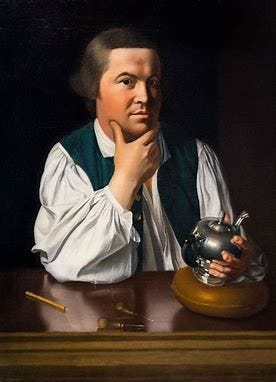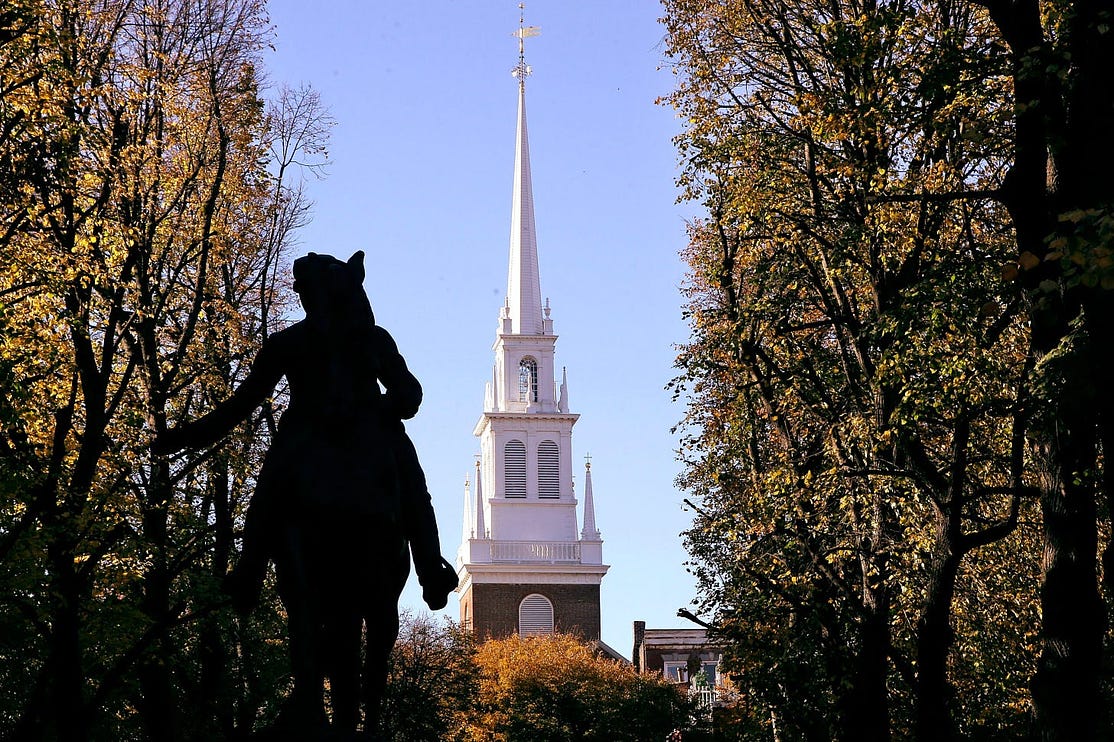Boston…where the spark of revolution turned into a raging fire.
Where just shy of 200 years later, seats in the bleachers along the first base line at Fenway Park were cheap enough that a broke graduate student and his bride could watch the Red Sox play in fair weather.
A place and time of innocence, where two kids in love grew up and prepared for the real world.
Boston, a city that sparks the imagination. Surrounded by small towns still filled with three-story Colonial-style homes, built in the 1700-1800s, with symmetrical designs, central chimneys, and steeply pitched roofs. Where history seeps from surrounding communities like Concord, Lexington, and Charleston (now part of Boston), the place where the Battle of Bunker Hill was fought.
I couldn’t get to the famous “Freedom Trail” fast enough when Karen and I first arrived in late-August of 1974. We’d barely gotten set up in married student housing, a 100-year-old tenement building that once stood in a red light district, when we headed downtown for the 2.5 mile stroll through America’s past.
The Massachusetts State House, the state capitol and home to the Massachusetts General Court, built in 1798.
The Park Street Church, founded in 1809, a site for various social justice movements.
Granary Burying Ground, established in 1660, the final resting place for such notable figures as Paul Revere, John Hancock, and Samuel Adams.
The Old Corner Bookstore, a historic building that once housed a publishing company and a bookstore where such famous authors as Ralph Waldo Emerson and Henry Wadsworth Longfellow hung out.
The Old South Meeting House, built in 1729, the house used to organize the Boston Tea Party in 1773.
The site where the Boston Massacre occurred.
Paul Revere House, the home of the famous American patriot, built in 1680. And the Old North Church, the oldest church building in Boston, where lanterns in the tower signaled the direction by which the British were approaching that famous night. “One if by land, two if by sea,” as Henry Wadsworth Longfellow’s poem “Paul Revere’s Ride” describes it.


I remember being captivated by these and other historic sites along the trail that day.
From our home base in Boston, we explored most of New England. A banjo and fiddle contest on the hillsides of Montpelier, Vermont, surrounded by a panoply of fall colors adorning the thick forests in every direction, as far as the eye could see. A camping trip in the White Mountains of Maine and New Hampshire. A jaunt to New Haven, Conn., to watch my brother’s classical guitar concert in a courtyard of Yale University.
So many memorable occasions between classes and exams at Boston University, where I eventually received a Master of Science Degree in Corporate Public Relations, and where Karen worked at the University Film Library to put food on our table.
Those were the days—one foot in the student lifestyle, the other in the adult world. Carefree, without the pressures of growing up that waited for us soon thereafter. A time when our responsibilities seemed easier to carry, and life felt more spontaneous. You remember, right?
While we were content in our bubble, no place is perfect. It started with the city’s newest display of architectural wizardry. Glass panes were unexpectedly falling out of the windows of the newly constructed John Hancock Tower to the streets below. A foreshadowing of the tumult and disruption about to befall the city.
A desegregation bussing crisis erupted a few weeks before we arrived, pitting the Black community of Roxbury against the Irish-Catholic community of South Boston, resulting in interracial violence. The city became engulfed in deep-seated racial tensions. Thousands of angry protestors took to the streets, clashing with police, confronting busloads of students being shuttled to different schools in communities very different from their own.
Every night Karen and I watched TV scenes of violence and unrest. Injuries, arrests, and an overarching sense of unease gripped most Bostonians. Indeed, the crisis underscored the challenges of racial inequality and integration in American society. It sparked a national dialogue about how to achieve educational equity amidst racial divisions that continue to this day.
So, why the look back? We came of age in Boston. Reminiscing reveals our growth and evolution. We gathered lessons that helped to shape us into who we are today. Even as I looked back toward a bright future, treasuring those fleeting moments of joy, I learned the world can be a harsh place for some, even in 1970s Boston. That the promise of freedom, opportunity, and the pursuit of happiness bequeathed to us by our Founding Fathers hasn’t always been applied evenly among our people.
Still, it’s our American experiment. Lady Liberty’s light still beckons the way to our shores for all freedom lovers, just as surely as that light in the Old North Church gave those patriots warning of impending danger. We’re making progress toward a more perfect union, in my humble opinion.
A few years back, Karen and I reveled in a wonderful road trip, starting in Boston, through each of the New England states…stopping at BnBs, marveling at the fall colors, remembering our youth.
Such a rich tapestry.

Leave A Comment